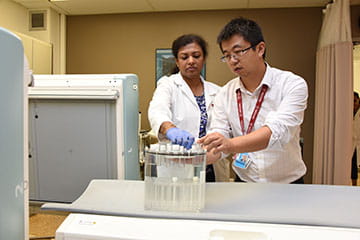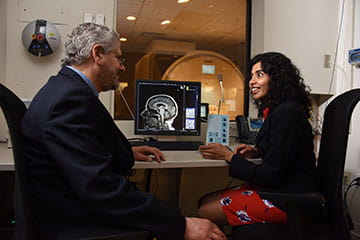A comprehensive and collaborative residency training program, the Integrated Diagnostic Radiology (DR)/Interventional Radiology (IR) Residency program at Indiana University School of Medicine is a five-year, ACGME-accredited program. In a dynamic, optimistic and innovative learning environment, the program curriculum includes research, education, informatics and health care economics.
The program leverages unique resources available from IU School of Medicine and Indiana University Health, allowing residents to have first-hand experience in one the largest leading hospital systems in the country. Residents who complete this program are prepared for academic or private practice interventional radiology and can apply for dual diagnostic radiology/interventional radiology certification by the American Board of Radiology. Ten integrated residents (PGY 2-6) are active in the program at any given time, and the program accepts two candidates each year through the National Residency Matching Program winter match. Residents in this program are exposed to both interventional radiology call and clinic throughout the entirety of training, beginning in the PGY 2 year.

